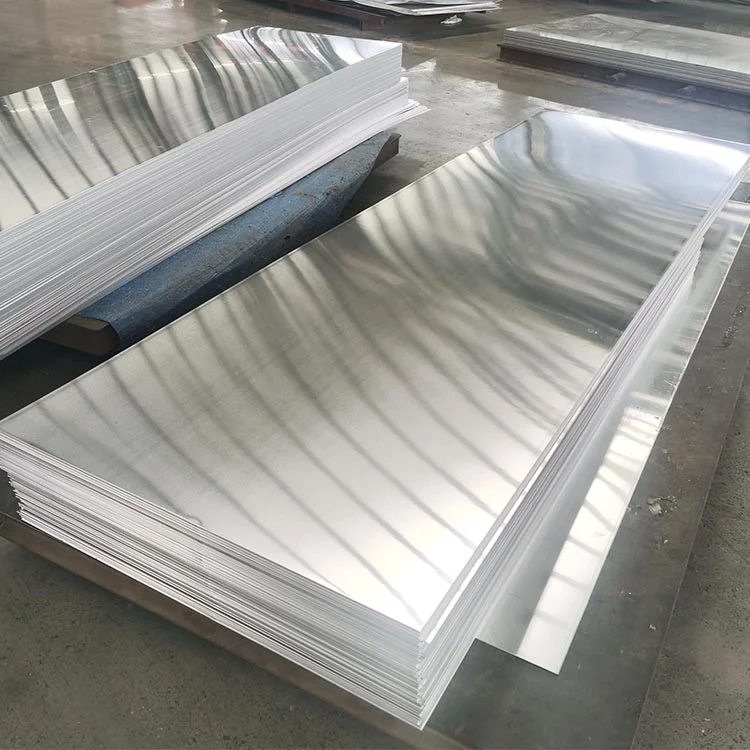Pipe jacketing is a crucial process in various industries that involves insulating and protecting pipes by adding an outer covering or jacket. It serves multiple purposes, including thermal insulation, corrosion protection, mechanical strength, aesthetic enhancement, and weatherproofing. Pipe jacketing plays a vital role in maintaining the efficiency, integrity, and longevity of piping systems in diverse applications.

Definition of Pipe Jacketing
Pipe jacketing refers to the application of an exterior covering or jacket to pipes in order to provide insulation, protect against corrosion, enhance aesthetics, or offer mechanical protection.
Importance of Pipe Jacketing
Pipe jacketing is important for several reasons. It helps prevent heat loss or gain in pipes, ensuring energy efficiency and maintaining the desired temperature of the fluid or gas flowing through the pipe. It also protects pipes from corrosion caused by moisture, chemicals, or environmental factors, thus extending their lifespan. Furthermore, pipe jacketing enhances the appearance of pipes in architectural applications and provides mechanical strength and weather resistance.

Benefits of Pipe Jacketing
- Thermal Insulation: Pipe jacketing provides a layer of insulation that reduces heat transfer, minimizing energy losses and maintaining the desired temperature of the fluid or gas inside the pipe.
- Energy Efficiency: By preventing heat loss or gain, pipe jacketing contributes to energy conservation and cost savings in heating, ventilation, air conditioning, and other thermal systems.
- Resistência à corrosão: Jacketing materials such as aluminum, stainless steel, and PVC act as a protective barrier, shielding pipes from corrosion caused by moisture, chemicals, or harsh environments.
- Mechanical Protection: Pipe jacketing offers mechanical strength and protection, safeguarding pipes from external impacts, abrasion, or potential damage in industrial settings or areas with high traffic.
- Aesthetic Enhancement: Pipe jacketing materials like stainless steel, aluminum, or PVC with various finishes and colors can improve the aesthetic appearance of pipes, making them suitable for architectural or building applications.
- Weatherproofing: Weatherproof jacketing materials protect pipes from exposure to UV radiation, rain, snow, extreme temperatures, or other weather conditions, particularly in outdoor or rooftop installations.
- Longevity and Durability: Pipe jacketing helps extend the lifespan of pipes by providing a protective layer that enhances their resistance to various factors, including corrosion, mechanical stress, and weathering.

Materials Used in Pipe Jacketing
Based on the particular needs of the application, various materials are used for pipe jacketing. The selection of a material is influenced by a variety of elements, including insulating qualities, corrosion resistance, mechanical strength, aesthetics, and financial constraints.
Insulation Materials
The primary function of insulation materials is thermal insulation, which reduces heat transmission and maintains temperature control in pipes. In pipe jacketing, the following insulation materials are frequently used:

- Fiberglass: Fiberglass insulation is inexpensive, lightweight, and has superior thermal insulating qualities. It is frequently used in refrigeration systems, hot water pipes, and HVAC systems.
- Mineral Wool: Mineral wool insulation provides good thermal insulation and sound absorption properties. It is fire-resistant and widely used in industrial applications where high-temperature insulation is required.
- Foam: Foam insulation, such as polyurethane or polyethylene foam, offers excellent thermal insulation and can be easily applied to pipes of various sizes and shapes. It is commonly used in both commercial and residential applications.
- Cellular Glass: Cellular glass insulation is made from crushed glass and offers excellent thermal insulation properties along with resistance to moisture and chemicals. It is often used in cryogenic applications or where high-temperature insulation is required.
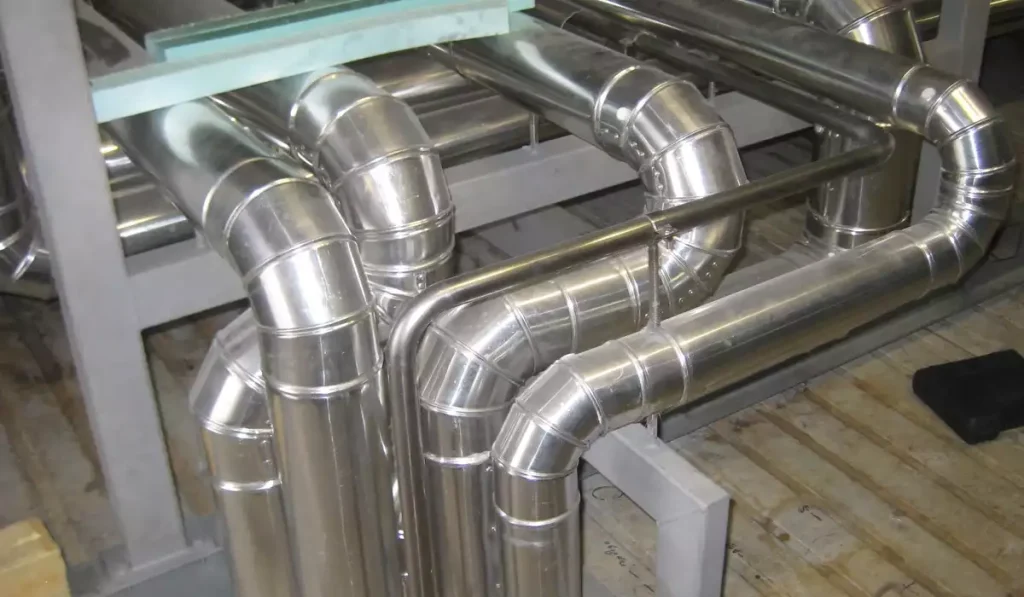
Corrosion Protection Materials
To protect pipes from corrosion brought on by moisture, chemicals, or the environment, jacketing materials are utilized. The following materials are frequently used in pipe jacketing to prevent corrosion:
- Aluminum: Aluminum jacketing is strong, lightweight, and offers outstanding corrosion resistance. Industrial settings, automation industry, construction industry, chemical facilities, oil and gas pipelines, and marine applications all frequently use it.
- Stainless Steel: Stainless steel jacketing offers superior corrosion resistance compared to other materials. It is particularly suitable for highly corrosive environments or applications where hygiene and cleanliness are essential.
- PVC: PVC jacketing is a cost-effective option that provides good corrosion resistance and is easy to install. It is commonly used in commercial buildings, HVAC systems, and applications where aesthetics are not a primary concern.

Aesthetic Materials
In architectural or building applications, aesthetic jacketing materials are typically employed for decorative purposes to improve the appearance of pipes. The following materials are frequently used in pipe jacketing for aesthetic reasons:
- Stainless steel: Stainless steel jacketing has a streamlined, contemporary appearance that makes it ideal for high-end architectural applications. It offers longevity, resistance to corrosion, and simplicity in maintenance.
- Aluminum: Aluminum jacketing is lightweight, adaptable, and accessible in a range of hues and finishes. It provides a modern appearance and is frequently utilized in commercial structures, hotels, restaurants, and public areas.
- PVC: For pipe jacketing applications, PVC jacketing in a variety of textures, designs, or hues can be employed to provide a pleasing look. When certain design requirements must be addressed or when cost-effective solutions are required, it is frequently adopted.

Mechanical Protection Materials
Os tubos são fisicamente protegidos por materiais de revestimento de proteção mecânica contra colisões, abrasão e danos mecânicos. Os seguintes materiais são frequentemente utilizados no revestimento de tubos como proteção mecânica:
- PVC: O revestimento de PVC que foi engrossado ou tem camadas que foram reforçadas oferece resistência mecânica e defesa contra impactos ou abrasão. É frequentemente utilizado em ambientes industriais, sistemas de canalização subterrâneos ou regiões de tráfego intenso.
- Aluminum: O alumínio oferece uma boa resistência mecânica e durabilidade para o revestimento. É frequentemente escolhido para aplicações em que os tubos estão sujeitos a tensões externas ou possíveis danos. A propósito, Liga de alumínio 3003 pode ser utilizado como material de tubagem, que tem boas propriedades de conformação, elevada resistência à corrosão e boa soldabilidade dos componentes das peças, mas também maior resistência do que Ligas da série 1000. No entanto, os materiais de alumínio da série 1000 são baratos e relativamente macios, utilizados principalmente para peças decorativas ou interiores.
- Aço inoxidável: O revestimento feito de aço inoxidável é mais durável e resistente a danos mecânicos. É adequada para aplicações em que as condutas necessitam de uma forte proteção.

Materiais resistentes ao clima
Os tubos podem ser protegidos da exposição a elementos climáticos prejudiciais, incluindo radiação UV, chuva, neve ou temperaturas extremamente baixas, com materiais de revestimento à prova de intempéries. Os seguintes materiais são frequentemente utilizados em revestimentos de tubos para proteção contra intempéries:
- PVC: O revestimento em PVC resistente às intempéries protege contra os raios UV e ajuda a evitar a entrada de água. É frequentemente utilizado em instalações em telhados ou em sistemas de canalização exteriores.
- Aluminum: Os revestimentos ou acabamentos resistentes às intempéries no revestimento de alumínio proporcionam uma defesa contra a corrosão e a deterioração. É frequentemente utilizado em situações em que os tubos são expostos às condições climatéricas exteriores.
- Revestimentos elastoméricos: Uma camada elastomérica, como uma feita de silicone ou borracha, pode ser utilizada como uma camada de impermeabilização. Oferecem adaptabilidade, isolamento e defesa contra os raios UV e temperaturas extremamente baixas.
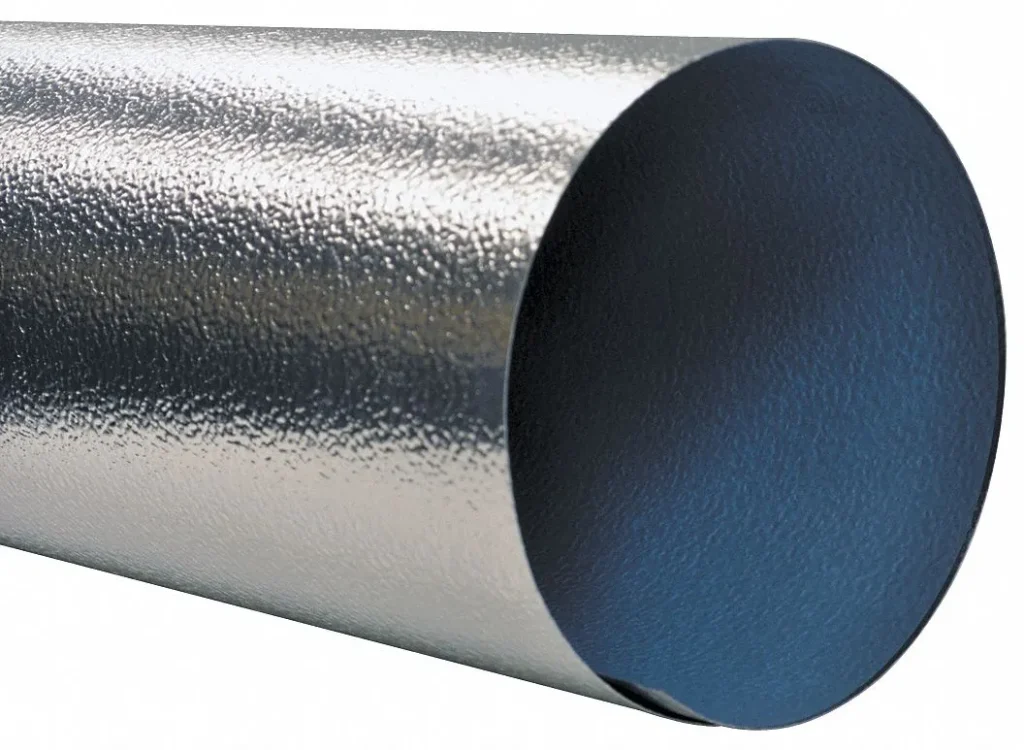
Vantagens do revestimento de tubos
O revestimento de tubos é um passo crucial em muitos sectores, uma vez que apresenta uma série de vantagens. A tomada de decisões sobre a utilização de revestimentos de tubos em determinadas aplicações pode ser facilitada pelo conhecimento destas vantagens. Apresentamos de seguida as principais vantagens do revestimento de tubos:
- Thermal Insulation: O isolamento térmico é uma das principais vantagens do revestimento de tubos. A temperatura do fluido ou do gás que se desloca através do tubo pode ser mantida ao nível correto, reduzindo consideravelmente a transferência de calor através da adição de uma camada isolante aos tubos. Isto ajuda o aquecimento, a ventilação, o ar condicionado e outros sistemas térmicos a funcionar de forma mais eficiente e económica.
- Energy Efficiency: O revestimento de tubos é essencial para a eficiência e conservação de energia. Ajuda a manter a temperatura adequada no interior da tubagem, minimizando o ganho ou perda de calor, o que diminui a necessidade de sistemas de aquecimento ou refrigeração. Isto resulta numa menor utilização de energia e em menores despesas operacionais.

- Resistência à corrosão: Outra vantagem notável do revestimento de tubos é a sua resistência à corrosão. Os materiais de revestimento dos tubos, que podem ser feitos de alumínio, aço inoxidável ou PVC, funcionam como uma barreira para evitar a corrosão provocada pela humidade, produtos químicos ou ambientes agressivos. Como resultado, os tubos duram mais tempo e requerem menos manutenção regular ou substituição.
- Proteção mecânica: O revestimento de tubos proporciona resistência mecânica e proteção aos tubos, salvaguardando-os contra impactos externos, abrasão ou danos potenciais. Isto é particularmente importante em ambientes industriais ou áreas com elevado tráfego ou potencial de impacto. Os materiais de revestimento como o PVC, o alumínio ou o aço inoxidável com maior espessura ou camadas reforçadas oferecem uma proteção mecânica fiável.
- Aesthetic Enhancement: O revestimento de tubos pode melhorar o aspeto esteticamente agradável dos tubos em aplicações de arquitetura ou construção. É possível obter um design visualmente agradável seleccionando materiais de revestimento como aço inoxidável, alumínio ou PVC com uma variedade de revestimentos, texturas ou cores. Isto qualifica-o para utilização em estruturas comerciais, instalações de alojamento, estabelecimentos de restauração, áreas públicas ou qualquer outro local onde a estética seja vital.
- Proteção contra as intempéries: Os materiais de revestimento de tubos à prova de intempéries protegem os tubos da exposição a condições climatéricas adversas, como a radiação UV, chuva, neve, temperaturas extremas ou outros factores ambientais. Os tubos instalados no exterior ou nos telhados são vulneráveis a danos relacionados com as condições climatéricas, e o revestimento à prova de intempéries garante a sua durabilidade e desempenho ao longo do tempo.
- Longevity and Durability: O revestimento de tubos aumenta a longevidade e a durabilidade dos tubos. A camada protetora fornecida pelos materiais de revestimento melhora a resistência dos tubos à corrosão, ao esforço mecânico e às intempéries. Isto ajuda a prolongar a vida útil dos tubos, reduzindo os requisitos de manutenção e garantindo um desempenho a longo prazo.

Aplicação de revestimento de tubos
O revestimento de tubos tem uma vasta gama de aplicações em várias indústrias e sectores. A versatilidade do revestimento de tubos permite-lhe ser utilizado em diferentes sistemas e ambientes. Eis algumas aplicações comuns do revestimento de tubos:
- Sistemas HVAC: O revestimento de tubos é amplamente utilizado em sistemas de aquecimento, ventilação e ar condicionado (AVAC). Ajuda a manter o isolamento térmico, evitando a perda ou ganho de calor em tubos que transportam fluidos quentes ou frios. Os sistemas AVAC dependem do revestimento dos tubos para garantir a eficiência energética e um desempenho ótimo.
- Tubagem de processo: O revestimento de tubos é crucial nos sistemas de tubagem de processo, onde serve tanto para isolamento térmico como para proteção contra a corrosão. A tubagem de processo é comummente encontrada em indústrias como a de processamento químico, farmacêutica, alimentar e de bebidas e refinarias de petróleo.

- Sistemas de refrigeração: O revestimento de tubos é essencial em sistemas de refrigeração, incluindo os utilizados em instalações de armazenamento a frio, fábricas de processamento de alimentos e supermercados. Ajuda a manter a temperatura desejada e a evitar a condensação nos tubos de refrigeração.
- Plantas químicas: As fábricas de produtos químicos implicam o transporte de vários produtos químicos através de tubagens. O revestimento de tubagens com materiais resistentes à corrosão proporciona uma proteção crucial contra a exposição a produtos químicos e garante a integridade do sistema de tubagens.
- Oleodutos e gasodutos: O revestimento de tubos é amplamente utilizado na indústria do petróleo e do gás, tanto para condutas em terra como em alto mar. Protege os tubos da corrosão causada pela exposição à humidade, produtos químicos e condições ambientais adversas.
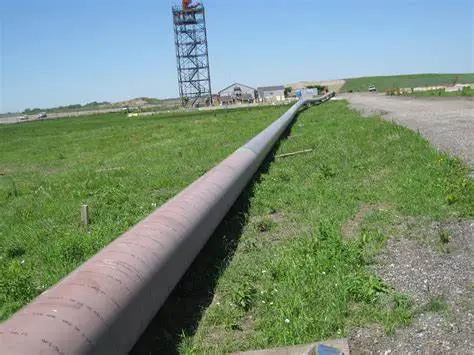
- Aplicações marinhas: O revestimento de tubos é utilizado em aplicações marítimas, incluindo navios, plataformas offshore e instalações portuárias. Ajuda a proteger os tubos contra a corrosão da água salgada e proporciona isolamento para os sistemas de transporte de fluidos nos navios.
- Aplicações na arquitetura e na construção: O revestimento de tubos é utilizado em aplicações de arquitetura e construção onde os tubos têm de ser esteticamente agradáveis. Os materiais de revestimento em aço inoxidável, alumínio ou PVC com vários acabamentos e cores podem melhorar o aspeto visual dos tubos em edifícios comerciais, hotéis, restaurantes e outros espaços públicos.
- Edifícios comerciais: O revestimento de tubos é normalmente utilizado em edifícios comerciais para sistemas AVAC, canalizações e sistemas de proteção contra incêndios. Assegura a eficiência energética, o isolamento térmico e a proteção mecânica das tubagens na infraestrutura do edifício.
- Hotéis, restaurantes e espaços públicos: Na hotelaria e nos espaços públicos, o revestimento de tubagens é utilizado tanto para fins funcionais como estéticos. Ajuda a manter a integridade térmica dos sistemas de tubagem, ao mesmo tempo que contribui para o design geral e o ambiente do espaço.
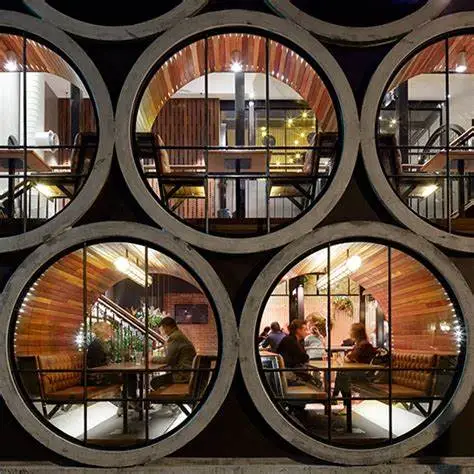
- Ambientes industriais: O revestimento de tubagens é crucial em ambientes industriais onde as tubagens estão expostas a maquinaria pesada, temperaturas elevadas e condições adversas. Proporciona proteção mecânica, isolamento e resistência à corrosão, garantindo a durabilidade e o desempenho dos sistemas de tubagem.
- Sistemas de tubagem subterrâneos: O revestimento de tubos desempenha um papel vital nos sistemas de tubagens subterrâneas, tais como linhas de esgotos, condutas de água e condutas de serviços públicos. Protege os tubos contra a corrosão do solo, a entrada de humidade e os danos mecânicos causados por factores externos.
- Outdoor Piping Systems: Outdoor piping systems, including those used in irrigation, drainage, or outdoor utilities, require pipe jacketing for weatherproofing and protection against UV radiation, rain, snow, and extreme temperature fluctuations.

Factors to Consider in Pipe Jacketing
Several factors should be considered when selecting and implementing pipe jacketing for a specific application. These factors ensure that the chosen jacketing materials and techniques meet the requirements and challenges of the system. The key factors to consider in pipe jacketing are:
- Temperature Range: The temperature range of the fluid or gas flowing through the pipes is a critical factor. Different jacketing materials have varying temperature tolerances, and selecting the appropriate material ensures the insulation and protection remain effective under the operating conditions.
- Environmental Factors: Environmental factors such as humidity, moisture levels, exposure to chemicals, and atmospheric conditions should be considered. These factors affect the choice of jacketing materials, corrosion resistance requirements, and weatherproofing capabilities.
- Chemical Exposure: In applications where pipes come into contact with corrosive chemicals, the jacketing material must have high chemical resistance. Compatibility with the specific chemicals is crucial to prevent degradation or corrosion of the jacketing material and maintain the integrity of the piping system.

- Aesthetic Requirements: For architectural or building applications, the aesthetic requirements should be taken into account. The choice of jacketing material, finish, color, and texture should align with the desired visual appearance and design intent.

- Budget Considerations: Budget constraints play a significant role in the selection of jacketing materials and techniques. It is essential to balance the desired performance, longevity, and aesthetics with the available budget to ensure cost-effectiveness.
- Consulting with Professionals: Consulting with professionals, such as engineers, contractors, or experienced jacketing specialists, is highly recommended. Their expertise can help in evaluating the specific requirements of the application, selecting suitable jacketing materials, and ensuring proper installation techniques.

Installation Process of Pipe Jacketing
The installation process of pipe jacketing involves several steps to ensure proper insulation, protection, and integrity of the system. While the specific installation techniquesmay vary depending on the jacketing material and application, the general process typically includes the following steps:
- Measurement and Sizing: Accurate measurement of the pipe dimensions is crucial to ensure the jacketing material fits properly. The outer diameter, length, and any fittings or protrusions on the pipe should be measured to determine the required size of the jacketing material.
- Preparation of Pipes: Before installing the jacketing, the pipes should be cleaned and prepared. This may include surface cleaning to remove dirt, grease, or rust. Any existing insulation or coatings that may disturb with the jacketing installation should also be removed.
- Application Techniques: There are various techniques for applying pipe jacketing, depending on the material and system requirements. Some common application techniques include:
- Adhesives: Adhesives, such as contact adhesives or adhesive tapes, are used to secure the jacketing material to the pipe surface. The adhesive is typically applied to the back of the jacketing material, and the material is wrapped tightly around the pipe.
- Mechanical Fasteners: Mechanical fasteners, such as screws, bands, or straps, can be used to secure the jacketing material in place. They offer extra support and make sure a tight fit. This method is commonly used for metal jacketing materials.

- Heat-Shrink Bands: Heat-shrink bands or sleeves are used with heat-shrinkable jacketing materials. The sleeve is placed around the pipe, and heat is applied to shrink the material and create a tight fit.
- Sealing and Insulation Integrity: Proper sealing of joints, seams, and connections is necessary to keep insulation integrity. Sealants or tapes may be used to make sure airtight and moisture-resistant seals. This step helps prevent heat transfer, moisture ingress, and corrosion.
- Vapor Barriers:
- Vapor barriers are used to prevent moisture condensation on the pipe surface. They are typically installed between the pipe and the jacketing material to create a moisture-resistant barrier.
- Weatherproofing:
- For outdoor applications, weatherproofing measures, such as waterproof tapes or coatings, may be applied to protect the jacketing material from UV radiation, rain, and other environmental elements.
- Cladding:
- In architectural applications, cladding materials, such as decorative covers or panels, may be installed over the pipe jacketing to enhance aesthetics and blend with the surrounding design elements.

In conclusion, pipe jacketing plays a vital role in various industries and applications. It provides thermal insulation, corrosion protection, and mechanical integrity to piping systems. By considering factors such as temperature range, environmental conditions, chemical exposure, aesthetics, budget, and consulting with professionals, the appropriate pipe jacketing can be selected.
The installation process involves accurate measurement and sizing, preparation of pipes, application techniques such as adhesives, mechanical fasteners, or heat-shrink bands, sealing and insulation integrity, and the use of additional accessories like vapor barriers, weatherproofing, and cladding.
Pipe jacketing offers numerous benefits, including energy efficiency, system durability, extended service life, reduced maintenance costs, and improved safety. Its diverse applications range from HVAC systems, process piping, and refrigeration systems to chemical plants, oil and gas pipelines, marine applications, and architectural and building projects.
Considering the complexity and criticality of pipe jacketing, professional assistance from engineers, contractors, or jacketing specialists is highly recommended to ensure proper selection, installation, and performance of the jacketing system.


